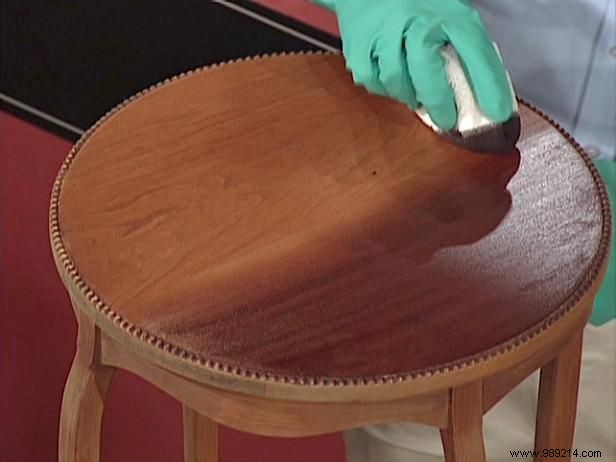
Cary Wiedman

Cary Wiedman
Prepare the wood by sanding it with coarse sandpaper (lower numbers indicate coarser grit). Then sand with a medium or finer grit sandpaper (higher numbers indicate finer grit).
Sand until the wood is smooth and even to the touch. Sand with, not against, the grain of the wood. Between sandings, use a tack cloth to remove dust.
Clean the wood with mineral spirits, applied with a rag or sponge. This helps bring out the color variation in the wood.
Apply the wood conditioner. This will help a smooth wood absorb the stain more evenly.

Cary Wiedman
Use a rag, soft sponge, or brush to apply the stain. Move with the grain, not against it. The longer you leave the stain on, the darker the finish will be.
Note: Stain is oil or water based, although some hybrid products are available. Water-based stains are non-toxic and wash off easily with water, but they do have a tendency to cause streaks. Oil-based stains, available in liquid or gel form, are easier to use; However, they produce stronger fumes and are more difficult to clean.
After the stain is dry, apply a finish to protect the wood and the stain. Various finishing options are available, depending on the desired results. Due to its durability, polyurethane is probably the most widely used finish today. Tung oil is also popular.